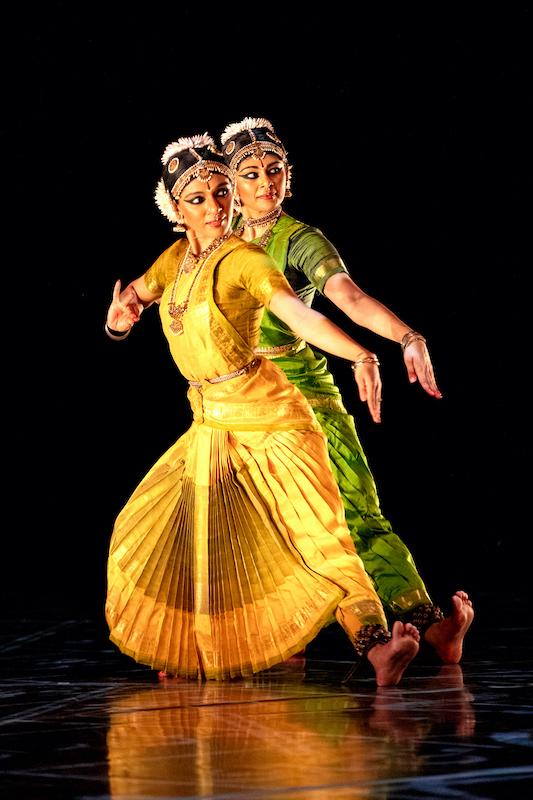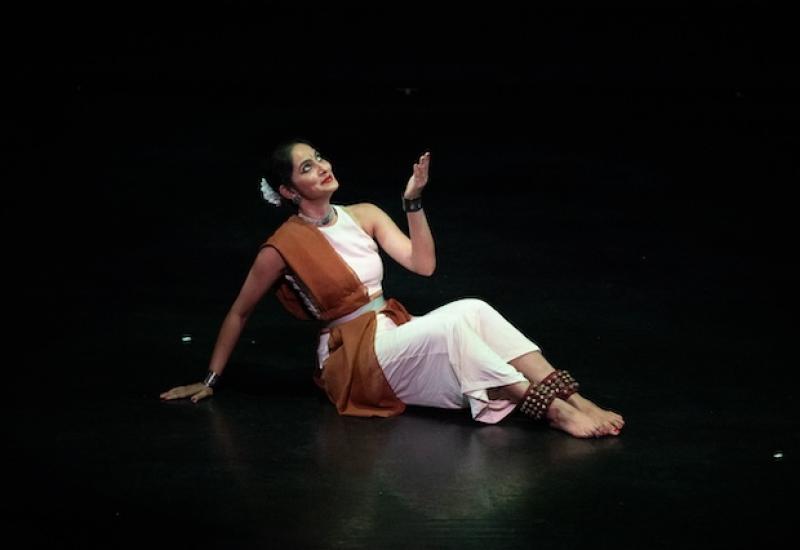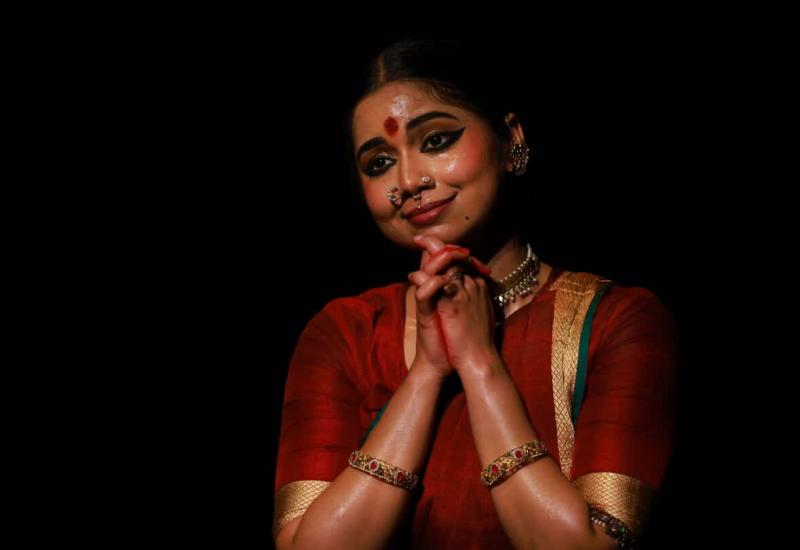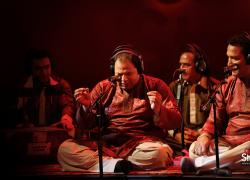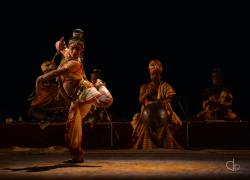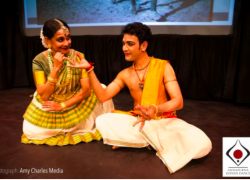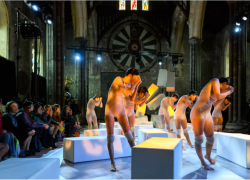Ananta, The Eternal, Ragamala Dance Company
Ananta, The Eternal
Ragamala Dance Company
Reviewed by Donald Hutera at Assembly @ Dance Base on August 13, 2024
Photo: Kyle Flubacker
Confession: I have followed, if somewhat fitfully, the progress of Ragamala Dance Company since it was founded by Ranee Ramawamy in my American birthplace of Minneapolis, Minnesota in 1992. But it's not the hometown connection that prompts me to sing the praises of this hour-long performance mainly choreographed by her daughter, Aparna Ramaswamy, and danced by Aparna and her sister Ashwini. Rather, I can rave about the work of these siblings because their dancing is so exquisitely detailed and the performance as a whole one of the highlights of my 2024 Edinburgh Festival Fringe.
In Sanskrit the word 'Ananta' conveys the concept of the infinite. In a programme note Aparna explains more specifically that Ananta, The Eternal 'uplifts the eternal relationship between the deity and the devotee. The experience of beholding the image of God with one’s own eyes is a central act of worship and charged with meaning—it is reciprocal and electric. The sacred is present in this auspicious moment; through the meeting of the eyes, one gains the grace of the divine.'
Divine is right. The performance is in four parts, with two duets bookending a pair of solos. Each short dance seems perfectly judged. The staging, including the lighting, is relatively no-frills but that doesn't matter a jot. The dance, and the dancers, stand out against a plain white wall.
The first, titular dance is a representation of the Hindu deity Mahavishnu who, as Krishna, comes to earth to save the Yamuna River and its people from the snake-demon Kaliya. The narrative is sketched out, but that is enough. This dance is really a vehicle by which he Ramaswamy sisters show what a fine-tuned double-act they are. Having trained together all their lives, the bond between them - a kinetic shorthand, if you will - is palpable. They look out rather than at each other, but always with a subtle yet sure awareness of the other.
The choreography maintains a split-level balance: often one sister is upright, the other lower, and one positioned slightly upstage from the other. They dance in unision or counterpoint, adjusting to the shifting rhyhms of a recorded soundtrack, occasionally gliding round each other and drawing arcs with their individual bodies. Their mastery of form – their carriage, gestures, facial expressions and musicality –generates immediate and gradually deepening pleasure. They're like spiritual showgirls whose beauty as a duo moved me.
There follows two solos. Aparna claims the spotlight in Om Kara Karini as Devi, the mother goddess both baleful and beneficent. You don't want to mess with her, and yet her power needn't be feared. Aparna's performance is magnetic. In Shankara Sri Giri, choregraphed by Alarmel Valli, it is the slightly taller, longer-limbed Ashwini's turn to shine as Shiva. Initially reserved, this performance opens up both spatially and temperamentally. Ashwini's dancing conveys warmth, strength and generosity. She and Aparna then join forces again in Thillana, a vibrant and speedy demonstration of simpatico virtuosity. Seeing them dance in this all of a piece mixed bill can induce an almost rapturous satisfaction, akin to being given a gift or having a bright, awake dream. With any luck it might well propel Ragamala Dance Company beyond Edinburgh and the Fringe to other parts of the UK, Europe and beyond.

